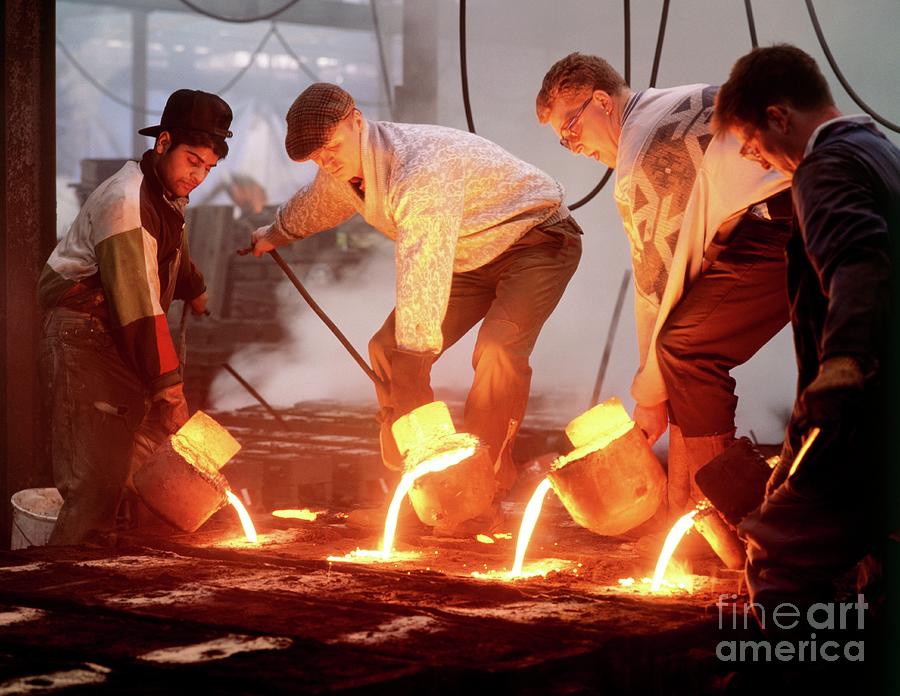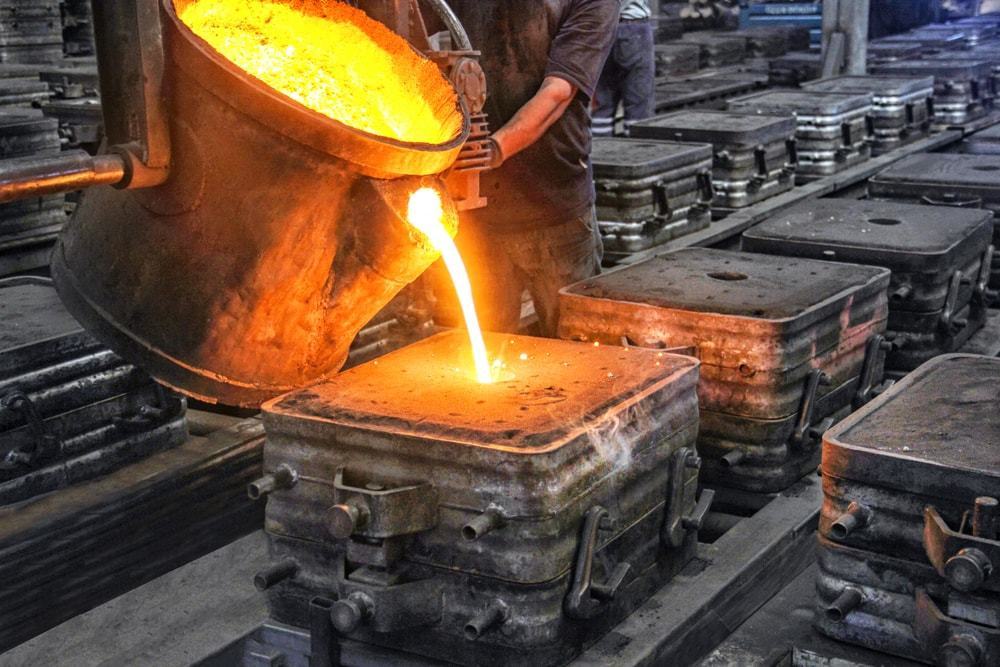Introducing the Intricacies of Style and Production at a Metal Foundry
The layout and manufacturing processes at a metal foundry entail a collection of elaborate steps. Each phase, from picking raw materials to melting and spreading, plays an essential role in the end product. Aluminum Foundry. Precision and quality assurance are critical in this market. As innovation advances, brand-new technologies are arising. These advancements may redefine conventional methods. What effects do these changes hold for the future of steel factories?
The Melting Process: Transforming Raw Products Into Liquid Metal
The melting process serves as the crucial very first step in changing raw products right into liquid steel, a treatment crucial for foundry procedures. This stage starts with the cautious option of metals, which might consist of aluminum, iron, or copper, depending on the desired end product. Each material is assessed for pureness and structure to assure ideal melting problems.

As the steels reach their melting factor, they transform from strong to liquid, permitting further refinement. This process can likewise consist of the removal of contaminations via slag development, assuring the quality of the liquid steel. Eventually, the successful completion of the melting procedure lays the structure for succeeding metalworking procedures.
Molding Strategies: Forming Metal With Precision
Complying with the melting process, the next phase in steel foundry procedures entails molding techniques that shape the fluid steel right into desired forms. Various approaches are utilized, each picked based on the particular requirements of the task. Sand spreading, one of the most typical strategies, makes use of a combination of sand and binder to produce mold and mildews that can be conveniently shaped and reused. An additional approach, financial investment spreading, includes producing a wax pattern that is coated in a ceramic covering, permitting intricate styles and high precision.
Pass away casting, in comparison, uses high-pressure to inject liquified metal into steel molds, leading to uniform and long lasting items. Furthermore, the selection of molding technique influences the cooling rate, surface coating, and dimensional accuracy of the final item. Recognizing these techniques is vital for maximizing design and guaranteeing the successful production of metal parts tailored to details applications.
Casting Approaches: From Model to Production
Numerous casting techniques are employed in metal shops to move from model development to major production. Amongst these approaches, sand casting stands out for its adaptability and cost-effectiveness, making it perfect for both huge and little manufacturing runs. Financial investment spreading, understood for its accuracy, is often used for complex geometries, enabling for great information in the last product. Pass away casting, appropriate for high-volume manufacturing, uses liquified steel infused into molds, providing superb surface area finish and dimensional precision.

Quality Assurance: Making Certain Excellence in Every Pour
While the casting process can vary considerably in between approaches, preserving extensive quality assurance is vital to ascertain that every put fulfills the needed requirements. Quality control in a metal foundry includes a series of systematic checks and assessments created to determine flaws early in the production process. This includes precise assessments of basic materials, tracking of melting temperatures, and assessments of mold and mildew integrity.
Foundry workers use different screening methods, such as non-destructive screening and dimensional confirmation, to identify that castings accomplish wanted requirements. Additionally, adherence to established market requirements and accreditations enhances the reliability of the end product.
Responses loops are likewise crucial; any kind of discrepancies kept in mind during high quality analyses are evaluated to improve processes and mitigate future errors. Eventually, a society of quality control promotes not only consumer fulfillment yet likewise a track record for excellence in the competitive landscape of steel production.
Developments and Technologies: The Future of Metal Foundries
The landscape of steel foundries is rapidly advancing, driven by innovations in modern technology and cutting-edge methods. Automation and robotics are transforming typical workflows, improving effectiveness and precision during manufacturing. Automated putting systems and robotic arms decrease human error, bring about better outputs. In addition, the integration of expert system is making it possible for anticipating maintenance, enhancing equipment efficiency, and reducing downtime.
Additive manufacturing is emerging as a game-changer, allowing for fast prototyping and the development of intricate geometries that were formerly unattainable. This technology facilitates the personalization of metal parts, accommodating certain customer demands without considerable dead time.
Sustainability is likewise a crucial focus, with foundries taking on greener methods, such as recycling scrap steel and using energy-efficient heating systems. Click Here These technologies not just improve efficiency however also straighten with worldwide initiatives in the direction of eco liable manufacturing, making certain the future of steel factories stays durable and affordable in a transforming commercial landscape.
Frequently Asked Questions
What Sorts of Metals Are Commonly Used in Shops?
Typical steels made use of in factories include aluminum, cast iron, bronze, brass, and steel (Aluminum Foundry). Each steel possesses one-of-a-kind homes, making them appropriate for numerous applications in industries like vehicle, aerospace, and construction, to name a few
How Do Factories Handle Waste and Environmental Effect?
Shops handle waste and environmental effect by carrying out reusing programs, making use of advanced purification systems, and adhering to stringent regulatory criteria. They frequently buy lasting technologies to decrease exhausts and promote liable source use throughout their operations.
What Precaution Remain In Location for Workers?
Foundries implement different precaution for workers, consisting of personal safety tools, proper air flow systems, routine safety training, emergency situation feedback protocols, and rigid adherence to work health regulations to reduce risks connected with hazardous products and tools.
How much time Does the Whole Production Process Typically Take?
The whole production procedure usually takes numerous weeks, depending upon the intricacy of the layout and the products made use of. Aspects such as mold prep work, melting, and cooling time greatly influence the general period of production.
What Are the Main Challenges Faced by Metal Factories Today?
Metal factories today encounter challenges such as increasing product expenses, rising and fall need, ecological laws, competent labor lacks, and preserving quality assurance. These concerns complicate production efficiency and success in an increasingly affordable market.
The design and manufacturing processes at a metal foundry include a collection of complex steps. The melting process serves as the important first step in transforming raw products into liquid metal, a treatment necessary for foundry procedures. Complying with the melting process, the next phase in metal foundry procedures includes molding techniques that form the fluid metal into wanted forms. Many casting approaches are utilized in steel factories to move from model advancement to full-scale production. Quality control in a metal foundry includes a series of organized checks and evaluations made to identify issues early in the production process.